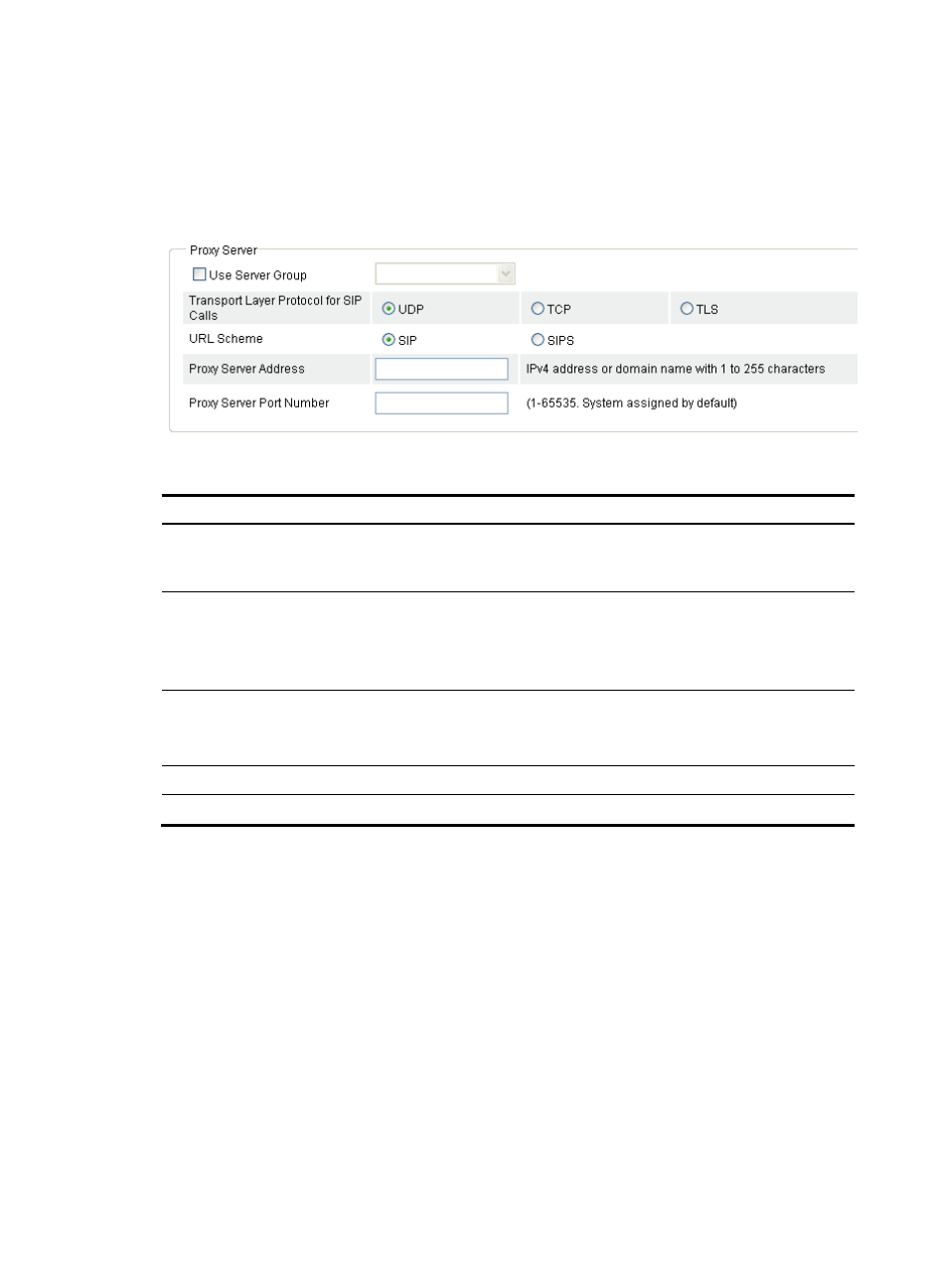Configuring proxy server, Configuring session properties, Configuring source address binding – H3C Technologies H3C MSR 50 User Manual
Page 675

290
Configuring proxy server
Select Voice Management > Call Connection > SIP Connection from the navigation tree to access the
proxy server configuration page, as shown in
Figure 677 Proxy server configuration page
Table 243 Configuration items
Item Description
Use Server Group
Select a server group from the list as the proxy server. You can add a server group
on the page that can be accessed by selecting Voice Management > Call
Connection > SIP Server Group Management from the navigation tree.
Transport Layer Protocol
for SIP Calls
•
UDP—Apply the UDP transport layer protocol when the device initiates a call.
•
TCP—Apply the TCP transport layer protocol when the device initiates a call.
•
TLS—Apply the TLS transport layer protocol when the device initiates a call.
By default, the UDP protocol is applied.
URL Scheme
•
SIP—Specify the SIP scheme as the URL scheme.
•
SIPS—Specify the SIPS scheme as the URL scheme.
By default, the SIP scheme is applied.
Proxy Server Address
Specify the IP address or a domain name of the proxy server.
Proxy Server Port Number Specify the port number of the proxy server.
Configuring session properties
Select Voice Management > Call Connection > SIP Connection from the navigation tree, and click the
Session Properties tab to access the session properties configuration page.
Configuring source address binding
Introduction to SIP support for source IP address binding
With this function, you can specify a source IP address for SIP signaling or media streams that go out of
the gateway. SIP support for source IP address binding is implemented by binding a static IP address or
the primary IP address of an interface.
•
Static IPv4 address binding—The source IP address specified for SIP calls is the bound IP address.
